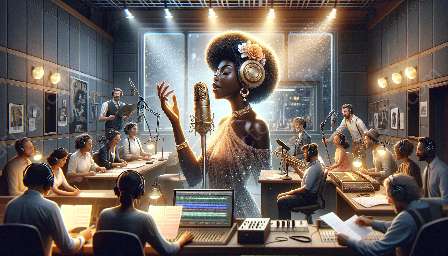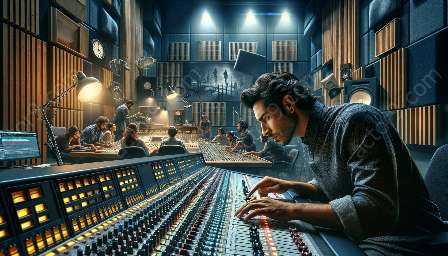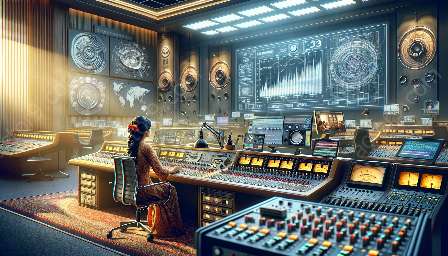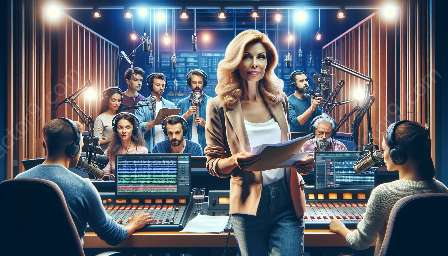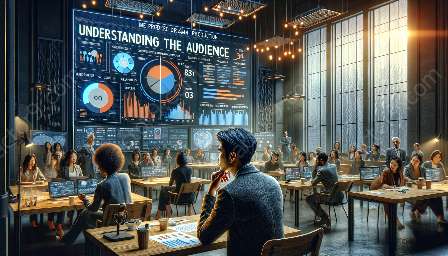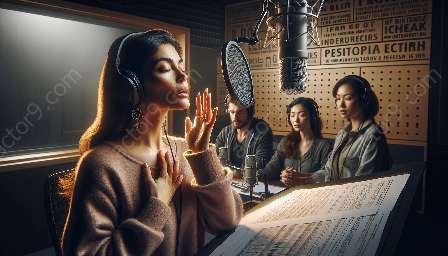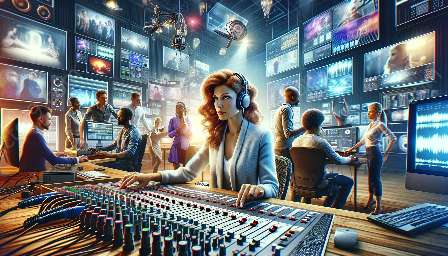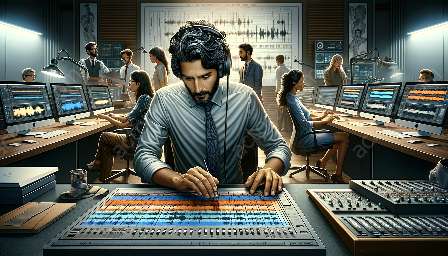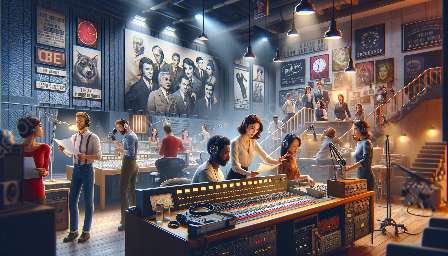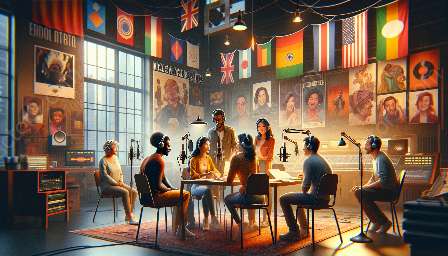In the world of entertainment, audio-only performances have long been a source of imaginative storytelling and captivating theatrical experiences. Especially in the realm of radio drama production and multimedia convergence, the use of sound, voice acting, and music brings a unique set of elements to the stage, immersing audiences in rich narratives without the need for visual accompaniment.
Radio Drama and Its Theatrical Essence
Radio drama, also known as audio drama, is a form of performance that relies solely on sound to convey its narrative. Originating from the golden age of radio, radio dramas were a staple in households, captivating audiences with their vivid storytelling and immersive soundscapes. These performances often featured elaborate sound effects, skilled voice acting, and compelling scripts, creating a truly theatrical experience for listeners.
Key Theatrical Elements
Several key elements contribute to the theatrical nature of audio-only performances, particularly in the realm of radio drama:
- Voice Acting: The art of voice acting plays a crucial role in bringing characters to life and conveying emotions solely through vocal expression. Talented voice actors infuse their performances with depth, personality, and dramatic flair, effectively capturing the essence of each character.
- Sound Design and Effects: Impeccable sound design and effects transport audiences to different environments, enhance storytelling, and create immersive atmospheres. From the rustling of leaves to the roar of thunder, every sound effect adds depth and dimension to the narrative, engaging the audience's imagination.
- Music: The strategic use of music heightens the emotional impact of audio performances, setting the tone and enhancing dramatic moments. Composers and sound designers carefully select and craft musical accompaniments that complement the storytelling, evoking powerful reactions from listeners.
- Narrative Structure: Just like traditional theater, audio-only performances rely on a well-crafted narrative structure to build tension, establish characters, and deliver compelling plot twists. Through strategic pacing and storytelling techniques, audio dramas captivate and hold the audience's attention.
Multimedia Convergence and The Art of Immersive Storytelling
As technology continues to advance, the convergence of multimedia platforms creates new opportunities for innovative storytelling. Audio-only performances are not limited to radio broadcasts; they can also extend into the realm of multimedia convergence, embracing formats such as podcasts, interactive audio experiences, and virtual reality narratives.
Creating Immersive Experiences
The combination of theatrical elements in audio-only performances with multimedia convergence opens the door to creating truly immersive experiences for audiences. By leveraging advanced audio production techniques and interactive storytelling, creators can transport listeners into rich, multi-dimensional worlds where they become active participants in the narrative.
Challenges and Advantages
While multimedia convergence offers exciting prospects for expanding the reach of audio-only performances, it also presents challenges. Maintaining the integrity of theatrical elements in the transition to new platforms and formats requires careful consideration. However, the advantage lies in the potential to engage diverse audiences and explore new creative avenues for storytelling.
Radio Drama Production and the Art of Sound
Behind the scenes, the production of radio dramas involves a meticulous focus on sound as the primary means of storytelling. Sound engineers, directors, writers, and voice actors collaborate to craft compelling narratives and bring them to life through the art of sound.
Sound Engineering and Technology
Advancements in sound engineering and technology offer a wealth of tools and techniques for enhancing the theatrical elements of audio-only performances. From binaural recording methods to spatial audio technologies, the possibilities for creating three-dimensional sonic experiences are constantly evolving, pushing the boundaries of what can be achieved in the realm of radio drama production.
Creative Collaboration
Successful radio drama production relies on the seamless collaboration of creative talents. Writers weave intricate storylines, directors guide performances, sound engineers craft immersive sonic landscapes, and voice actors breathe life into characters, all working together to deliver captivating audio performances that resonate with audiences.
Conclusion
The theatrical elements in audio-only performances, particularly in the context of radio drama and multimedia convergence, showcase the enduring power of sound as a means of immersive storytelling. From the timeless allure of radio dramas to the innovative potential of multimedia convergence, the art of creating captivating theatrical experiences through sound continues to inspire and engage audiences in new and exciting ways.

